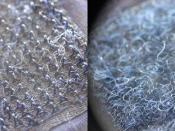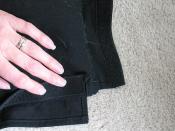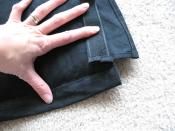Introduction.
When it comes to fasteners, Velcro can only be described as a breakthrough innovation. Nothing since the zipper, invented in 1893, but not successfully commercialized until 1923, has revolutionized the fastener industry more then Velcro.
Described as a "hook and loop fastening system", or the "touch fastener", Velcro can be found used in many aspects of contemporary living. Velcro has been used in clothing, shoes, sneakers, space suits, baby diapers, blood pressure cuffs, notebooks, toys, cars, knee and elbow pads, to name just a few.
An amalgam of the French words for velvet "velour", and hook "crochet", Velcro is actually a trademark -- a symbol of quality and reputation - like Band-Aid, Xerox and Kleenex -- and is owned by a group of companies, Velcro Industries.
Today the Velcro group of companies are a technologically driven, global organization and the industry leader in "hook and loop" fasteners. Through its worldwide subsidaries, Velcro offers hundreds of different hook and loop products and fastening systems.
Offerings range from standard fastening tapes of woven and knit construction, through custom-designed specialty fasteners featuring a range of performance characteristics, materials, sizes and shapes. Advances in technology now make available to Velcro possibilities for additional applications extending further its durability as an innovation.
The Innovation - Background.
In the early 1900's, as a small boy in Switzerland, George de Mestral loved two things--inventing and the outdoors. George was a curious and inventive person who received his first patent at age 12 for designing a toy plane. After completing his studies as an engineer, he took a job in the machine shop of a Swiss engineering company. He worked by day--but by night, he played with the machines and during his recreational time he walked his beloved Swiss countryside.
In the 1940's, George de Mestrel,


